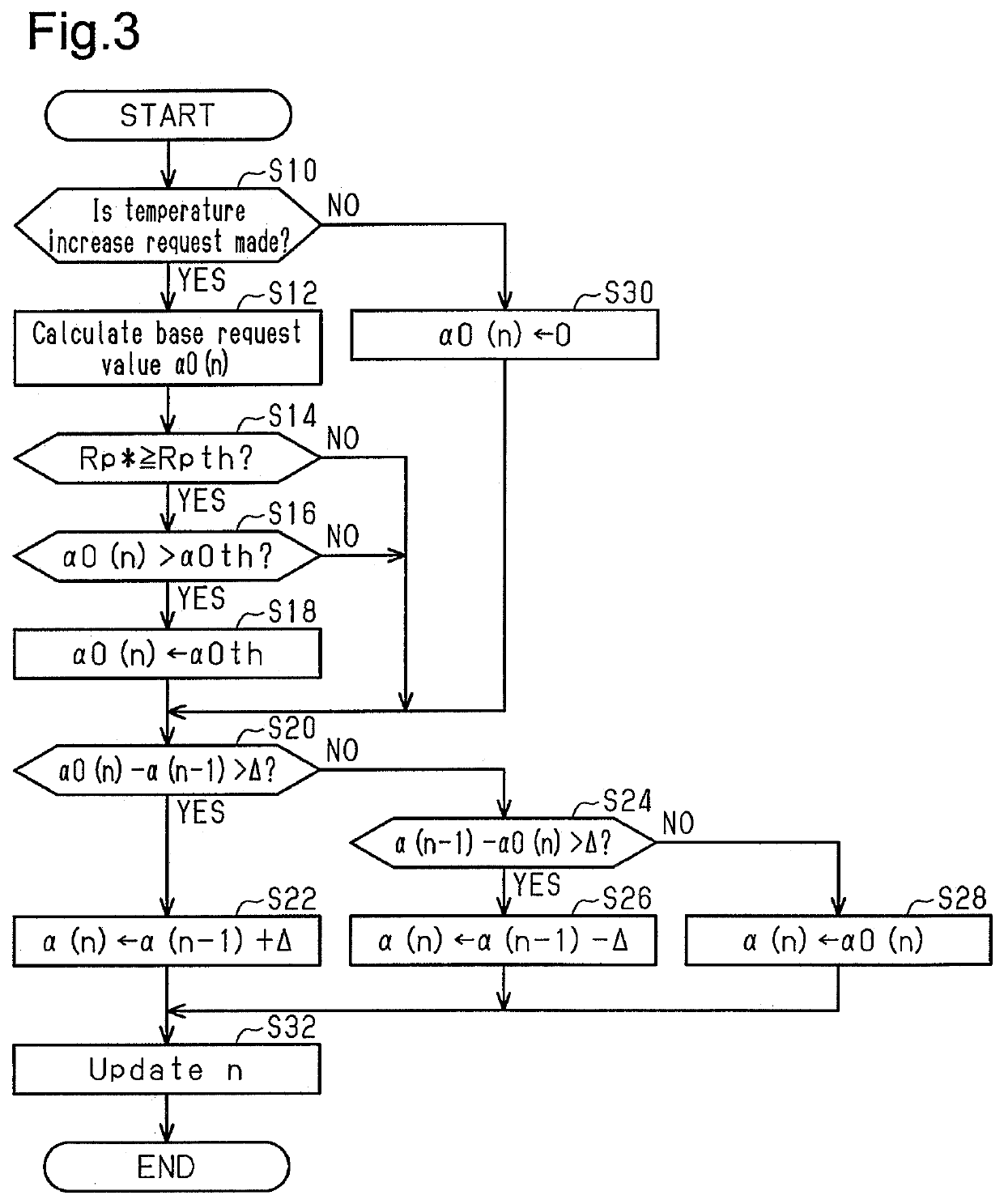Controller for internal combustion engine and method for controlling internal combustion engine
a technology of internal combustion engine and control device, which is applied in the direction of electric control, machines/engines, mechanical equipment, etc., can solve the problems of difficult to set the air-fuel ratio, the air-fuel ratio is different between cylinders, and the vapor of fuel is not always uniformly distributed to the cylinders, so as to increase the combustion deterioration tendency and increase the differences between cylinders
- Summary
- Abstract
- Description
- Claims
- Application Information
AI Technical Summary
Benefits of technology
Problems solved by technology
Method used
Image
Examples
first embodiment
[0024]A controller for an internal combustion engine according to a first embodiment will now be described with reference to the drawings.
[0025]In an internal combustion engine 10 shown in FIG. 1, air drawn from an intake passage 12 flows through a throttle valve 14 into a combustion chamber 16 of each cylinder. A fuel injection valve 18, which injects fuel, and an ignition device 20, which generates spark discharges, project into the combustion chamber 16. A mixture of air and fuel is burned in each combustion chamber 16, and the burned air-fuel mixture is discharged as exhaust gas out of the combustion chamber 16 into an exhaust passage 22. A three-way catalyst 24 having an oxygen storage capability is arranged in the exhaust passage 22.
[0026]The fuel injection valve 18 injects fuel into a delivery pipe 30. A fuel pump 34 feeds the delivery pipe 30 with fuel from a fuel tank 32. Some of the fuel stored in the fuel tank 32 vaporizes into fuel vapor. The fuel vapor is collected by a...
second embodiment
[0053]A second embodiment will now be described focusing on differences from the first embodiment.
[0054]FIG. 5 shows the processing procedures of the request-value output processor M18 in the second embodiment. The process shown in FIG. 5 is achieved by the CPU 42, for example, repeatedly executing the programs stored in the ROM 44 in predetermined cycles. In FIG. 5, the processes corresponding to those of FIG. 3 are denoted by the same step numbers for the sake of convenience.
[0055]In the series of processes shown in FIG. 5, after the CPU 42 calculates the base request value α0 (S12), the CPU 42 variably sets the specified value Rpth in accordance with the purge concentration Dp and determines whether or not the target purge rate Rp* is greater than or equal to the specified value Rpth (S14a). In detail, when the purge concentration Dp is large, the CPU 42 sets the specified value Rpth to be less that that when the purge concentration Dp is small. That is, as the purge concentratio...
PUM
 Login to View More
Login to View More Abstract
Description
Claims
Application Information
 Login to View More
Login to View More - R&D
- Intellectual Property
- Life Sciences
- Materials
- Tech Scout
- Unparalleled Data Quality
- Higher Quality Content
- 60% Fewer Hallucinations
Browse by: Latest US Patents, China's latest patents, Technical Efficacy Thesaurus, Application Domain, Technology Topic, Popular Technical Reports.
© 2025 PatSnap. All rights reserved.Legal|Privacy policy|Modern Slavery Act Transparency Statement|Sitemap|About US| Contact US: help@patsnap.com



